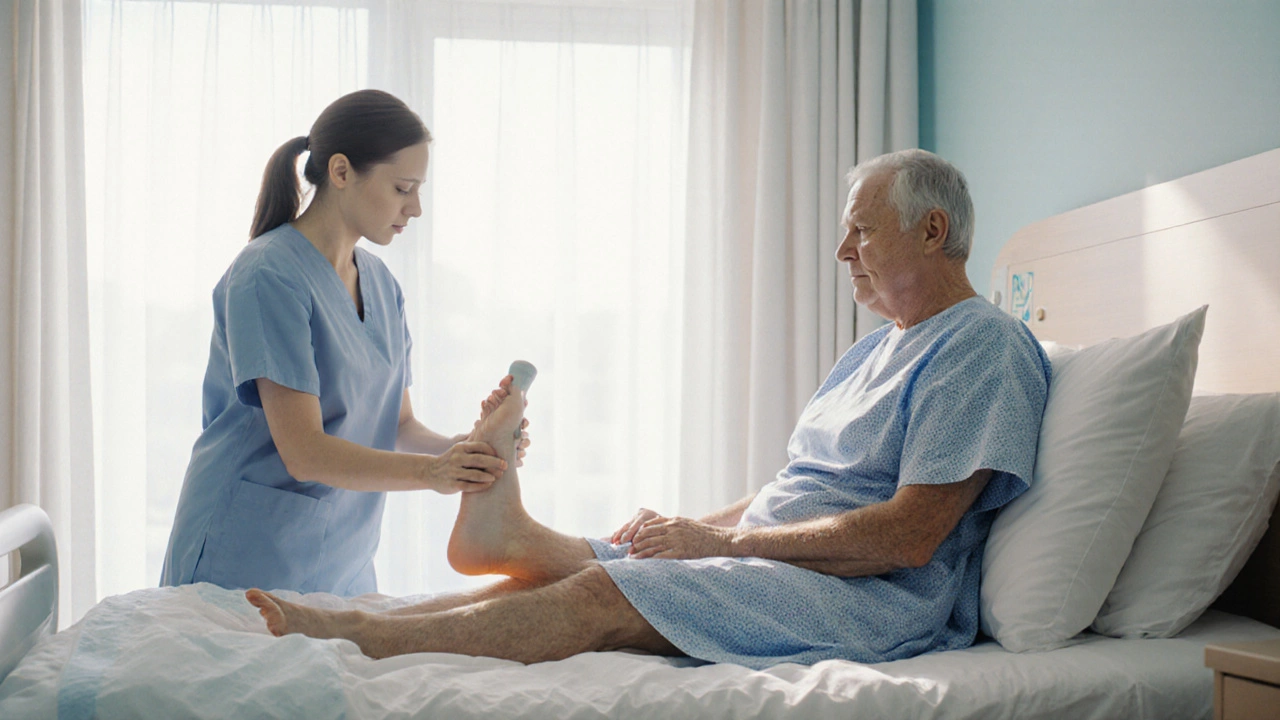Knee Replacement Rehab Length: How Long Does Recovery Really Take?
When you get a knee replacement, a surgical procedure to replace a damaged knee joint with an artificial one. Also known as total knee arthroplasty, it’s one of the most common orthopedic surgeries in India—especially for people with severe arthritis or long-term joint wear. But the surgery is just the start. The real work begins afterward, and that’s where knee replacement rehab, the structured process of regaining strength, movement, and function after surgery comes in. Most people assume recovery is over once they leave the hospital, but that’s not true. Rehab is what turns a successful surgery into a life-changing result.
How long does it take? The short answer: knee replacement rehab length usually runs from 3 to 6 months for full recovery, but you’ll be walking without help in weeks. By 6 weeks, most patients can walk without a cane or walker. By 3 months, you’ll be doing light activities like walking, swimming, or cycling. Full strength and mobility often take 6 months, sometimes longer if you’re older, have other health issues, or skip physical therapy. physical therapy after knee surgery, a guided program of exercises to restore joint motion and muscle strength isn’t optional—it’s the single biggest factor in how fast and how well you recover. Skipping it means longer pain, less mobility, and higher risk of complications.
What affects your timeline? Your age, weight, overall health, and how active you were before surgery all play a role. Someone who was walking daily before surgery usually rebounds faster than someone who was mostly sedentary. Pain levels, swelling, and how well you follow your therapist’s instructions matter too. Don’t compare your progress to someone else’s. One person might be hiking by 4 months; another might need 6 months to climb stairs without help—and both are normal. post-op knee care, the daily habits that protect your new joint and prevent infection includes keeping the wound clean, avoiding deep squats early on, and using ice and elevation to control swelling. Your doctor will tell you when you can shower, drive, or return to work—but your rehab team will guide you on what you can actually do, not just what’s allowed.
Many people think rehab ends when the pain fades. It doesn’t. The goal isn’t just to move again—it’s to move well. That means rebuilding the muscles around your knee that weakened over years of pain. If you don’t do the exercises, your knee might feel okay for a while, but it won’t last. You’ll risk early wear, instability, or even needing another surgery down the line. The best outcomes come from people who treat rehab like a job—show up, do the work, and stay consistent.
Below, you’ll find real stories and expert advice on what to expect during each phase of recovery, how to avoid common mistakes, and what to do if things don’t go as planned. Whether you’re preparing for surgery or stuck in the middle of rehab, these posts give you the no-fluff, India-tested facts you need to get back on your feet—for good.
Average Rehab Stay After Knee Replacement: What to Expect
Find out the typical inpatient and outpatient rehab lengths after knee replacement, what influences stay duration, and tips to speed recovery.





